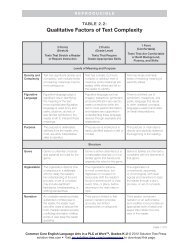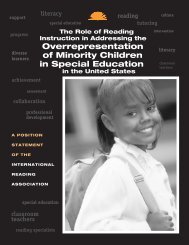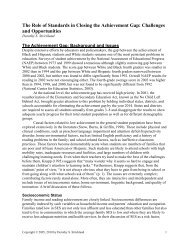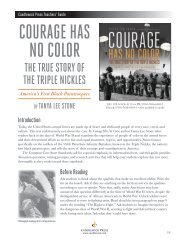What Research Has to Say About Reading Instruction - International ...
What Research Has to Say About Reading Instruction - International ...
What Research Has to Say About Reading Instruction - International ...
You also want an ePaper? Increase the reach of your titles
YUMPU automatically turns print PDFs into web optimized ePapers that Google loves.
Coming Up: Get Ready for Session 9<br />
Fluent readers recognize printed words quickly, effortlessly, and<br />
almost unconsciously. Fluency reduces the need <strong>to</strong> spend time<br />
decoding and identifying words and so allows the reader <strong>to</strong> attend<br />
actively <strong>to</strong> comprehension. In “<strong>Reading</strong> Fluency: Its Development and<br />
Assessment,” author Jay Samuels stresses the importance of supporting<br />
children’s development of fluency and describes repeated readings, a<br />
strategy designed <strong>to</strong> increase au<strong>to</strong>matic identification and recognition<br />
of words. He concludes with tips on assessing students’ levels of fluency.<br />
Set aside some extra time for reading this week so you can become<br />
familiar with Valerie Ellery’s chapter on fluency from the book Creating<br />
Strategic Readers. Then, before our next session, think about the<br />
following:<br />
• How do readers become fluent?<br />
• <strong>What</strong> are good ways <strong>to</strong> assess fluency?<br />
• Why is time spent reading vital <strong>to</strong> reading fluency?<br />
From the Professional Development Edition of <strong>What</strong> <strong>Research</strong> <strong>Has</strong> <strong>to</strong> <strong>Say</strong> <strong>About</strong> <strong>Reading</strong> <strong>Instruction</strong> (3rd ed.),<br />
© 2009 <strong>International</strong> <strong>Reading</strong> Association.<br />
85
















